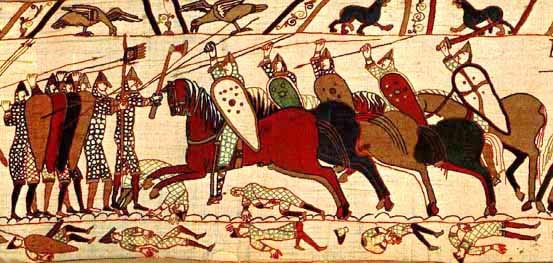Lance
 The English term lance is derived, via Middle English ''launce'' and Old French ''lance'', from the Latin ''lancea'', a generic term meaning a spear or javelin employed by both infantry and cavalry, with English initially keeping these generic meanings. It developed later into a term for spear-like weapons specially designed and modified to be part of a "weapon system" for use couched under the arm during a charge, being equipped with special features such as grappers to engage with lance rests attached to breastplates, and vamplates, small circular plates designed to prevent the hand sliding up the shaft upon impact. These specific features were in use by the beginning of the late 14th century.
The English term lance is derived, via Middle English ''launce'' and Old French ''lance'', from the Latin ''lancea'', a generic term meaning a spear or javelin employed by both infantry and cavalry, with English initially keeping these generic meanings. It developed later into a term for spear-like weapons specially designed and modified to be part of a "weapon system" for use couched under the arm during a charge, being equipped with special features such as grappers to engage with lance rests attached to breastplates, and vamplates, small circular plates designed to prevent the hand sliding up the shaft upon impact. These specific features were in use by the beginning of the late 14th century.Though best known as a military and sporting weapon carried by European knights and men-at-arms, the use of lances was widespread throughout East Asia, the Middle East, and North Africa wherever suitable mounts were available. Lances were the main weapon of lancers of the medieval period and beyond, and these troops also carried secondary weapons such as swords, battle axes, war hammers, maces, and daggers for use in hand-to-hand combat, since the lance was often a one-use-per-engagement weapon, becoming embedded in their targets or being broken on impact. Assuming the lance survived the initial impact without breaking, it could also prove inappropriate for more static, closer engagements where its length became a hindrance. Provided by Wikipedia
-
1
-
2
-
3